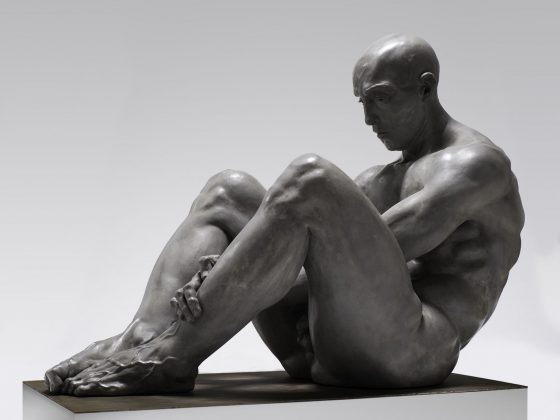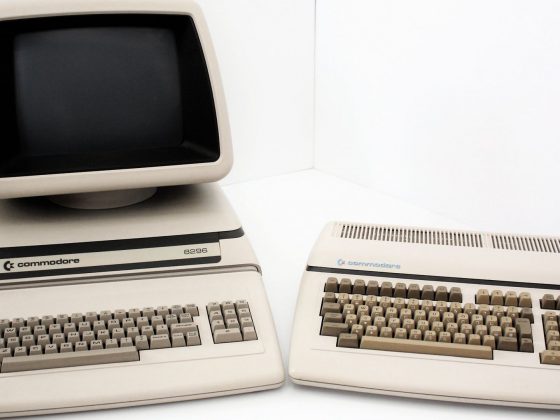”These timepieces have a heart, the beating of which can be heard when a watch is wound, and they can tell their history, like, for example, an old watch from the Petrodvorets Watch Factory, with a seascape painted on its face by an artist: what prompted them to do this? Maybe this watch was intended as a present for someone having links with a sea? Or, on a contrary: maybe some talented seaman painted this seascape on his own watch? This is my passion, watches with a past, sometimes unremarkable and worn, but being a treasure trove of the history.”
– Przemysław (known as Enkil in the Ownetic collector’s community) tells about the history of his unique collection and shares stories hidden in his watches.
How did your adventure with collecting watches begin? When did it become a passion?
P: Watches have been accompanying me since my childhood. I still remember how my Grandpa used to take out from his pocket a beautifully adorned round box on a chain, which after opening turned out to be a watch. Additionally, its dial was also beautifully decorated with engravings – and it was red. I always asked my Grandpa to let me hold that watch in my hand, even for a moment.
When I was at a secondary school, my Mom gave me a Zaria mechanical watch, which she had bought at a bazaar. Zaria had a white face and four card suit symbols used to mark 12, 3, 6 and 9. I had worn that watch on my wrist for several years; it broke down twice, and the second time a watchmaker refused to repair it – and so my Zaria spent about 15–18 years in a drawer. Several years ago I repaired it myself, and I still wear it on some occasions.

My real “hoarding” began when I saw my daughter (who was five at that time) playing with an old incomplete watch with an inscription “Raketa” on its face. I decided to learn more about that model, and thus I discovered the Internet forum of Klub Miłośników Zegarów i Zegarków (Club of Clock and Watch Lovers). There I learned all I wanted to know, and much more. Furthermore, on that forum I could see wonderful collections of watches owned by people active on that forum. I have grown to consider many of them my friends, although we have never met in person.
It appears that your daughter’s curiosity and KMZiZ proved to be an impulse, a turning point.
P: Yes, my adventure with collecting started when I became a regular visitor on that forum – about five years ago. Seeing extensive collections of Polish and foreign collectors I became aware of a vast diversity of existing models and brands. I decided to collect all color versions of a specific model of Raketa. Only after some time I realized that possibly even employees of the factory that used to manufacture them did not really know how many of them were actually produced…
Your path as a collector leads from a family history to inspiration by collections of other watch collectors. How has your collection grown? How many pieces do you have at the moment?
P: First pieces are presents and research amongst collectors of similar interests. Later, probably similarly to other collectors, I searched for watches in my nearest environment. During family visits, I asked about forgotten watches hidden in drawers, and such. Later, I decided to focus my collection on one specific direction. I search for watches on auction portals, but I also have several friends who help me a lot. For example, one of them purchases old objects –whenever he finds any watches, he immediately calls me. My friends from the watch forum also sometimes send me information about various opportunities worth pursuing. Often I buy several or a dozen watches in one package – only to get one of them of real interest to me. I resell or exchange the remaining ones with other people having similar hobbies.

Currently, my collection contains about 300 watches –with the majority of them being products of the Petrodvorets Watch Factory Raketa.
Where does your fascination with Soviet watch models stem from?
P: A piece that directed my attention towards a fascinating world of mechanical watches was Raketa, that is a flagship Soviet watch. Raketa is the oldest factory in Russia, still in operation. It was established by Peter the Great in 1721.
Please, tell us something more about the collection Pocket watches from the USSR era. Can you tell an interesting story about them?
P: It mainly contains Raketa watches, representing simply a majority of my collection of watches. I really like them and whenever there is any occasion to purchase them, I try to pursue it.
Are you a collector? Show your collection to the world!
Furthermore, it also includes Molnija watches for blind people (watches for blind people form a subcollection in my collection). The remaining two Molnija watches – one with an uncovered glass and a white dial, and the Molnija with a cover and a red dial – belonged to my Grandpa: both are the first pocket watches owned by me. They have a special place in my collection and I hope to pass them to my grandchildren one day.


Your collection contains extraordinary pieces – Petrodvorets and Molnija watches for blind people. How do you find these treasures?
P: It is true. My main area of interest are first models of watches manufactured at the P.F.Z. factory. (Petrodvorets Watch Factory). At that time the factory was not called Raketa yet, but this was a name of some models. Petrodvorets and Raketa for blind people in this version had been on my priority list for a long time, and one day they were put up for auction by one person – of course, I managed to buy them. These pieces were not very impressive and I did not have many competitors. Only a few people know that these are some of the first models of watches for blind people manufactured in the Soviet Union.

Beside these models, I also have Raketa watches for blind people manufactured later, including one signed with the Cornavin name, and one with a black dial. These pieces are also rare. Beside them, I also have a pocket Molnija watch for blind people and a pocket Kirova watch with a dial for blind people – a unique product of the First Moscow Watch Factory.
What is so special about these older watches that prompted you to collect them and makes you talk about them so passionately?
P: These timepieces have a heart, the beating of which can be heard when a watch is wound, and they can tell their history, like, for example, an old watch from the Petrodvorets Watch Factory, with a seascape painted on its face by an artist: what prompted them to do this? Maybe this watch was intended as a present for someone having links with a sea? Or, on a contrary: maybe some talented seaman painted this seascape on his own watch? This is my passion, watches with a past, sometimes unremarkable and worn, but being a treasure trove of the history.

What challenges are faced by watch collectors?
P: The greatest challenge is to specify some limits for yourself. Narrowing your collection to one precise and preset direction and remaining consequently within these frames. Another challenge are rara aves –ghost watches, watches of which only a few exist in collections known all over the world, but sometimes found unexpectedly in a market when you just go to buy some radishes. This happened in Russia last year: one collector noticed Raketa 3031, a real rarity, amongst some junk displayed on a table.
If you were to choose, which 3 pieces in your collections are most valued by you?
P: Of course, these are watches with a sentimental value, that is, both Molnija watches of my Grandpa, and the Zaria watches being the present from my Mom.
As an experienced collector, do you have any advice for aspiring and beginning collectors?
P: My collecting activities are limited within a specific framework, do not spread to include all models and pieces. I know several collectors with collections in comparison to which my collection is only a small one. At the beginning, everybody buys everything they like – without any restrictions. Such collections do not form a coherent whole: they are just a collection of various watches found attractive by their owner. My advice is to establish a specific goal, and then to pursue it consistently. It is not easy, but greatly satisfying.










